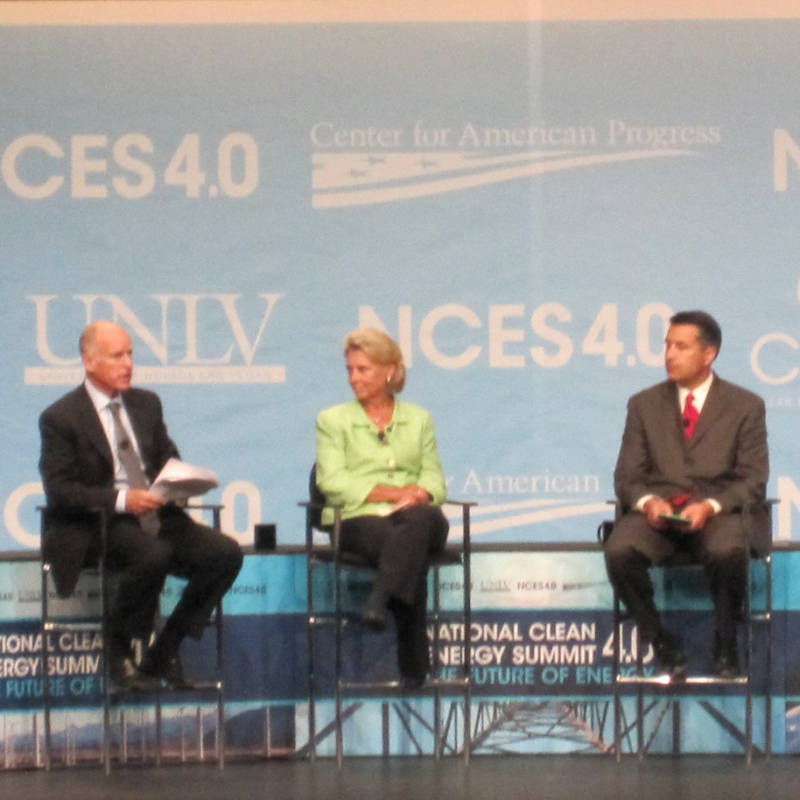In Las Vegas, politicians and industry leaders point to California’s lead

In his keynote address at this week’s National Clean Energy Summit, Vice President Joe Biden said America is at a crossroads when it comes to energy, and that the choice is clear.
“If we shrink from deciding that we’re going to lead in the area of alternative energy, renewable energy, then we will be making the biggest mistake this nation has made in its entire history,” he said.
The Vice President was joined by Energy Secretary Steven Chu, California Governor Jerry Brown, and other political and industry leaders at the summit, which is in its fourth year and is sponsored by several entities, including the Center for American Progress and Nevada Senator Harry Reid.
“If we don’t lead in this new energy technology, we’re going to follow, and I’d hate like hell to be trading the importation of oil, for the importation of new technologies,” said Biden. “Neither is very acceptable.”
Biden said that the last two years, the United States has fallen behind China and Germany in domestic clean energy investments.
In his address, Energy Secretary Steven Chu laid out a road map for the United States, saying that if the nation wants to lead, it needs to invest in research and education. He also recommended creating a clean energy development agency and a federal clean energy standard in order to spur private investments.
In an interview after his speech, Chu said that California’s renewal portfolio standard of 33% by 2020 does just that.
“Manufacturers of wind and solar can actually make this — they know they have a market, that utility companies will actually buy this, and that stimulates investments in those areas,” he said. “The government necessarily has to put money into research, but you also need a market draw, and that market draw is ultimately going to be driven by a price on carbon. But in the meantime, you need things like renewable or clean energy standards for that market draw.”
Governor Jerry Brown told summit-goers that the policy is working for California.
“California’s 33%-by-2020 goal has stimulated real investment, real money is coming in, by the billions, and they know that we’re committed, we’re going to make it happen. If the United States had a similar goal, it would be good.”
Brown said the state granted permits for 5,000 megawatts of new solar and wind power last year alone, with 15 times that amount currently in the permitting process.
